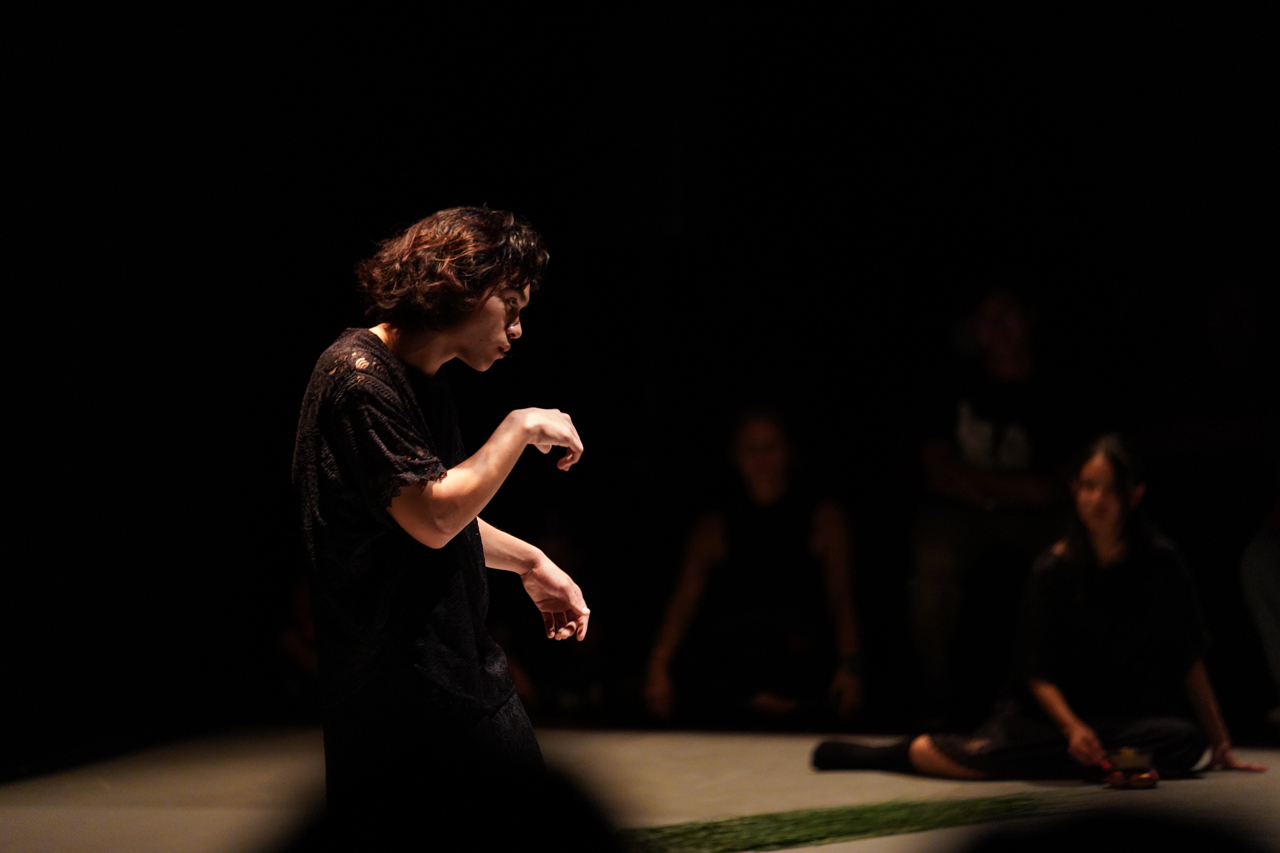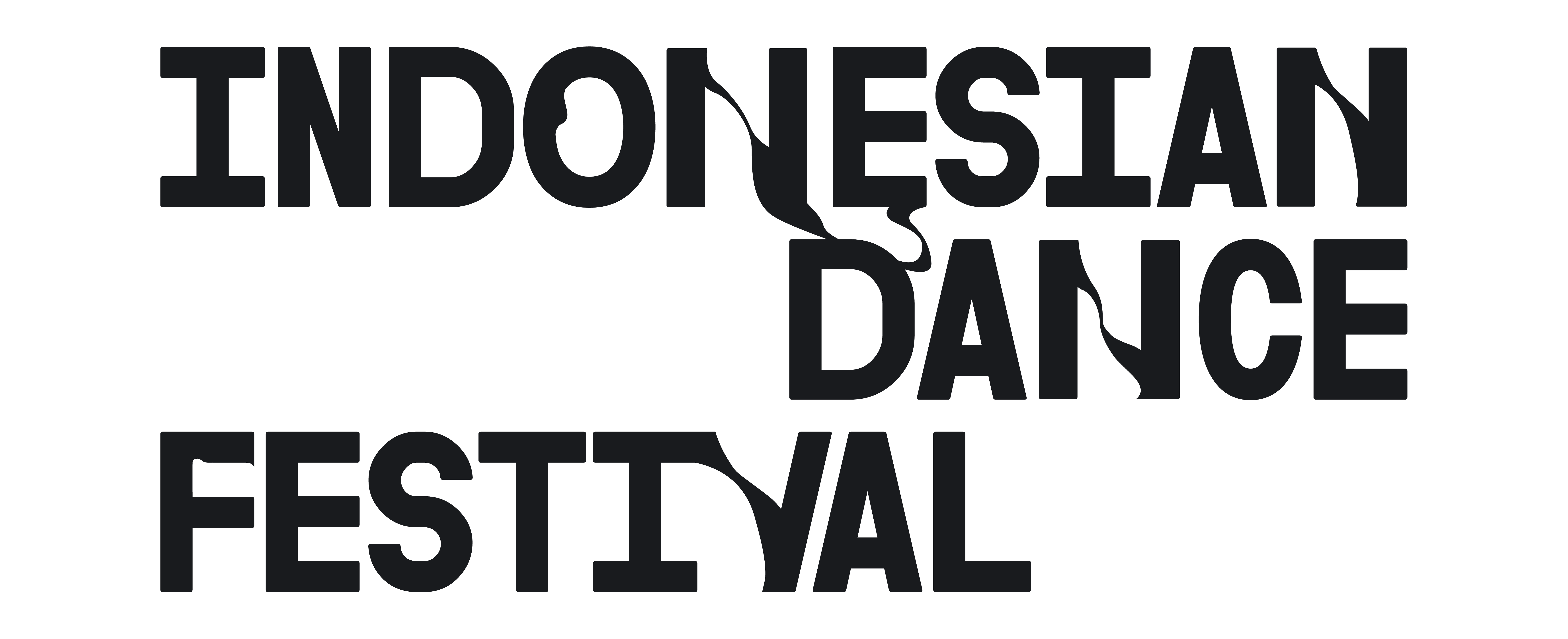
Leu Wijee, A Work about Bodies Post-Disaster and What it Entails
18 April 2023
Written by: Titah AW
Translation by: Ratri Anindyajati
“[The] Museum series is my autobiography. This work reflects what I have been through, what I have learned, and what we can create together. So it's not about voicing something in a direct way, but rather about the movement itself. My creation is the motion. The work focuses on challenging the body rather than communicating a message.”
– Leu Wijee
The experience of dealing with natural disasters is one of the most prominent collective memories of humankind. Not only altering the earth’s topography, natural disasters are a determining factor in the evolution and migration pattern of Homo sapiens. Even today, unwittingly, we cannot escape from the forces of nature, especially living in an archipelagic country like Indonesia. Leu Wijee (24) was shockingly exposed to this ancestral awareness on September 28th 2018, when Palu, the city of his birth, was hit by a 7.5 Richter scale earthquake and tsunami.
Leu Wijee was in Papua developing a dance work when news of this earthquake arrived. “I was on a boat when my friends came running and screaming, 'Leu, Leu, your home! Earthquake!'. I found out too late,” he said, remembering that day.

The paralysis of the communication network prevented Leu from contacting his family, unable to ask how they were faring. Those days, Leu felt his world was hazy with uncertainty. Day after day, he stayed on the boat, surrendering to the rhythmic rise and fall of the waves. He was filled with mixed feelings, restrained franticness, confusion that couldn't be helped, left only to contemplate the connection between his body - as a human - and cataclysms of nature. He remembers this period as one of the most intense internal dialogues within himself. It was only on the seventh day after the earthquake that Leu received confirmation that his family was safe. The burden of uncertainty was lifted, but his musings had already condensed and transformed into the early seeds of his first contemporary dance work: the Museum series.
“This work’s concept sprung from my own ruminations of a potential relationship between disaster and dance. It all started there,”
– explained Leu

The Museum currently has two chapters. The first chapter premiered at Helatari Salihara 2021, entitled Museum I: Waves. The second, Museum II: Ridden, was selected in November 2022 as part of the KAMPANA program of the Indonesian Dance Festival (IDF) 2022, a program designed for young Asian choreographers with potential to stage their works in progress. With its intense repetitive motion using handmade brooms from palm sticks and minimalist music, alluring the audience to submerge from the constant rhythm and hymn. Revealing an impression of bodies defending and preparing to face a force that goes beyond them: the forces of nature. With new understanding, Leu reflects on his journey to reinterpret his birthplace as a post-disaster site.
“[The] Museum series is my autobiography. This work reflects what I have been through, what I have learned, and what we can create together. So it's not about voicing something in a direct way, but rather about the movement itself. My creation is the motion. The work focuses on challenging the body rather than communicating a message."
Museum II: Ridden continued Leu’s journey when he was finally able to return to Palu, nine months after the earthquake. There, he conducted field research in the designated red zones. He witnessed how people had adapted and created new daily movements and systems. "I watched them, noticing how they often checked the ground, looking for buried treasure. I also saw them cleaning the neighborhood together with homemade stick brooms," said Leu. He then later adapted these stick brooms as a focal point of Museum II: Ridden.

His collaboration in Museum II: Ridden with Mio Ishida, a choreographer from Japan, also left a deep impression on Leu. Leu realized that he and Mio shared similar experiences, both living in areas prone to earthquakes and natural disasters. While in Japan, one of the outcomes from their joint creative process is the concept of the body in ‘standby’ mode. “I experienced a 6.2 magnitude earthquake in Japan. Now what's interesting is that in Japan, I noticed bodies activated by the systems becoming ready-alert, whereas in Palu, people responded by praying or [performing] rituals," he said. The contrast between the two was very interesting: Japan taking a technological approach, while Indonesia was highly spiritual.
“Even though the end goal is the same, that is to activate the body to be ready-alert. Those became our keywords: preparedness, readiness,”
– said Leu
This spiritual readiness inspired Leu to choose the title Ridden for the second half of the Museum series. He was intrigued by Asian society’s beliefs of ghost-occupied bodies. He used it as a metaphor for the dancers’ bodies ridden by the disastrous experiences he discovered from his research. "Expressed as an interpretation with both mind and body".
Although the Museum is his first contemporary dance work, the idea of connection between disasters and bodily movement is a fundamental asset. Leu's vision touches on a primordial human experience, inviting the audience to reconsider one's own existence as well as our relation to nature. Leu feels there is still much to explore and work to be done through the Museum series. Nowadays, Leu is forging ideas for the Museum's third chapter, which will use its centerpiece of mutated bodies.
Prior to these current works, Leu Wijee was active in street dancing. He briefly joined Animal Pop Dance, under the direction of Jecko Siompo. Growing up in the street dance environment encouraged Leu to push himself to make a variety of new and authentic movements. "There's a saying in b-boy dance, even if someone disguises themselves with a mask during a dance-off, we know who they are [because of their dance]. Street dance requires us to create our own unique character," he explained.
"This August, Leu Wijee will be holding a three-week residency in Taiwan in the ADAM (Asia Discovers Asia Meeting) 2023 program by Taipei Performing Arts Center. Within the program, he plans to further develop the second series of Museum II: Ridden. “I want to invest more time in the studio for the creative process. Hopefully Museum III can later be displayed at IDF 2024," he concluded."
